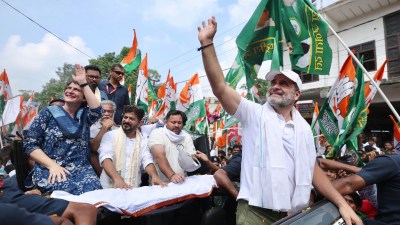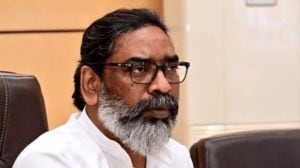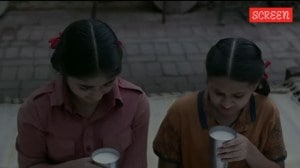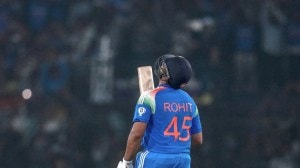PLAY COUNTRY
This years Prithvi Theatre Festival turns the spotlight on the work of three groups that have consistently put people at the heart of their work
This years Prithvi Theatre Festival turns the spotlight on the work of three groups that have consistently put people at the heart of their work
NINASAM,KARNATAKA
In Heggodu,a small village in Karnatakas Shivamogga district,its not uncommon for farmers gathered at a tea stall to break into a passionate discussion on King Lear or the latest production of Merchant of Venice. In this picturesque village,theatre is a way of life. That is Ninasams greatest achievement.
Ninasam (the short form of Sri Nilakanteshwara Natyaseva Samgha) is the tale of how a prosperous farmer brought the stories of the world to his village. In 1949,K V Subbanna,along with a group of villagers,set up a library,an amateur theatre troupe and a cultural centre at Heggodu. They performed Shakespeare and Brecht,Moliere and Mahabharata,screened films by Federico Fellini and Akira Kurosawa for the people of the village.
Over six decades,this small group expanded to accommodate a drama school,a publishing house,a film society and two theatre repertoires. In 1980,Ninasam opened the theatre institute to offer a 10-month long diploma course. At first,we followed the truncated version of National School of Drama (NSD)s curriculum. But over the years,we have changed it to suit our needs, says Akshara K V,son of Subbanna,who is now at the helm of its affairs. The institute paved way for Ninasams rural theatre repertory group,Tirugata (which means travelling in Kannada). Every year,the troupe is trained for three months to stage three plays an Indian,an international and a Kannada play. They travel with these plays to various villages and towns across Karnataka over a period of nine months. Tirugata has staged nearly 80 plays so far,introducing different theatre styles and plays to the rural audience, says Ashok. Plays like Ashadada Ondu Dina,Saddu Vicharane Nadeyuttide,Chidambara Rahasya and Macbeth became popular because they were not esoteric. For the rural audience,they were a means of engaging with the world outside. At Prithvi Theatre Festival,both its theatre units,Ninasam and Ninasam Tirugata,will stage two plays each called Venissina Vyapaara (a Kannada adaptation of The Merchant of Venice),Aakkashabutti (a play on the complexities of life in a metro),Aakashabheri and Yakshagana Vidynmati Kalyaana.
Thumbs up: Along with theatre,K V Subbanna developed the whole community in Heggodu. This is ideal theatre, says playwright Manav Kaul.
ADISHAKTI,PONDICHERRY
In 1993,Veenapani Chawla moved to Vazhakulam,a small town eight kilometres from Pondicherry. The Mumbai thespian was leaving behind the space she had earned for herself in the citys theatre circuit,with acclaimed plays like Odeipus and Savitri. She was staking all that for a dream: developing a contemporary theatrical idiom using traditional art forms. With six theatre associates,who shared that vision,she set up the Adishakti Laboratory for Theatre Art Research.
Since then,Adishakti,nestled between two villages,has been an incubator for several exciting experiments in contemporary Indian theatre. It was the ideal setting for Tim Supples A Midsummer Nights Dream,which was rehearsed and readied here before it took the theatre world by storm.
Chawla,now 63,has researched Indian martial arts and classical theatre forms for years and believes that its the knowledge of traditional arts that makes the contemporary language richer. Thats the reason Adishakti hosts constant interactions with traditional artists. The groups performances are shot through with the vocabulary of Kalaripayattu,Kathakali,Koodiyattam,Chhau,puppetry and other folk art. We work as provocateurs. Apart from traditional arts,we also explore ancient text, says Chawla,the artistic director of Adishakti,who,for the last three years,has been exploring different versions of the Ramayana.
I have a different sense of aesthetics,which is driven by a contemporary vision. It borders on the hybrid and is not restricted to the purity of traditional forms, says Chawla,who uses shadow puppetry in The Hare and The Tortoise,akin to the use of digital projection in plays. Four of Adishaktis major plays,Ganapati,Hare and The Tortoise,Impressions of Bhima and Rhinoceros,will be staged at this years fest.
Thumbs up: Veenapani Chawla has evolved a different way of narration by using old techniques. She has found new interpretations for the modern Indian theatre while the vocabulary belongs to our traditional art forms, says thespian Arundhati Nag.
NIRMAN KALA MANCH,PATNA
When Sanjay Upadhyays classmates at National School of Drama (NSD) dreamt of a career in Mumbai,he waited for the holidays to arrive so that he could return to Patna and do theatre. During his first break at NSD in 1988,he did just that: he founded Nirman Kala Manch,a theatre group that survives to this day and has produced 60 plays. It was a spontaneous decision to live in Bihar and base my plays on folk art forms. I have spent my early years in villages. Thats why I could never shrug off the influence of traditional arts in my work, says the 62-year-old.
Prithvi Theatre is hosting five of Nirman Kala Manch playsNeelkanth Nirala (based on poet Suryakant Tripathi Niralas life),Harsingar,Kaha Gaye Mere Ugna,Dharti Aaba (based on poet Birsa Mundas life) and Bidesia. Most of Nirman Kala Manchs plays are musicals,drawing heavily on folk arts and local talent. Bidesia,which revolves around a womans determination to get her wayward husband back after he goes to Kolkata in search of work,is its most popular production and has been performed nearly 500 times. Lyricist-actor Piyush Mishras Gagan Damaamaa Bajou (on Bhagat Singhs life),Bakri and Company Ustad are other notable plays of the group.
The director takes his plays to remote parts of Bihar and other states. The group has nearly 10 people on its payroll and,for the last decade,has made Bihar Hindi Sahitya Sammelan in Patna its home. Over the years,we have come to focus on musicals and biographical plays. All the plays are originals and bear influences of folk dance and music forms like Bidesia,Bhavai,Nautanki and Domkach. The sets are minimalist to make travelling easy, Upadhyay says.
Safar Maina,an offshoot of the group,is proof of its ability to weave theatre into the life of local communities. We started Safar Maina in 1990 with children of Nand Nagar Colony,a place infamous for criminal antecedents of its residents, says Usha Kiran Khan,president of the Manch. Most of the children of this slum go to school while a couple of youngsters have made it to NSD. But Nirman Kala Manchs biggest role has been in training grassroots artists in all the facets of theatre. In the next five years,we plan to open a theatre institute, says Upadhyay.
Thumbs up: Sanjay Upadhyay is a good singer and has a great music sense. He is doing a commendable job of creating musical plays based of folk traditions of India, says theatreperson Satyadev Dubey.



- 01
- 02
- 03
- 04
- 05




























